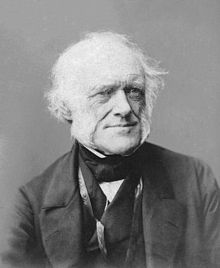Geology
O’Donoghue, Joseph
Joseph O’Donoghue is an Irish author who graduated from University College Cork with a BSc in geology. After a number of years he found that the work of a geologist had lost its appeal.  However, his deep-rooted interest in the mysteries and controversies associated with geology drove him to a private investigation of the subject.
However, his deep-rooted interest in the mysteries and controversies associated with geology drove him to a private investigation of the subject.
A review of O’Donoghue’s work commented “His research reinforced his impression that the geological establishment had bought too far into one theory of natural forces, to the extent that they had to close their eyes to any facts that contradicted it. As a result, they had made themselves blind to obvious and observable phenomena that their theory could not explain.
The theory in question is uniformitarianism, which is the idea that the forces at work in the natural world (like erosion) haven’t changed over time, and so everything we observe must have an explanation that is still at work. It also means that changes happen very slowly and gradually. On the surface, this seems logical, but problems arise because it simply cannot explain everything. There are some events we know happened, like the Ice Age, that are not explainable by this theory, or that can only have occurred by massive catastrophes.” (a)
O’Donoghue has commenced publishing an intended eight books with the series title of The Legend of Atlantis and the Science of Geology. The first two volumes, Atlantis and Catastrophe: Myth or Reality? [2100] and The Geology of Greece: Uniformity or Catastrophe? [2101] are now available.
In the first pages of Volume One he declared his support for the idea of Atlantis as an Atlantic continent. I totally disagree with that idea and my reasons can be read using the links here.
I expect that I shall be returning to Mr.O’Donoghue frequently, as I work my way through the first two volumes.
Lyell, Charles
Charles Lyell (1797-1875) was Scottish-born lawyer and the leading British geologist of his day. He  was a enthusiastic proponent of uniformitarianism as expressed in his best known book, Principles of Geology. Daniel Wilson quoted Lyell as concluding that “the entire evidence is adverse to the idea that the Canaries, the Madeiras, and the Azores, are surviving fragments of a vast submerged island, or continuous area of the adjacent continent.” From the same book, R.E. Anderson quotes[1486] Lyell as confessing a temptation to ”accept the theory of an Atlantis island in the northern Atlantic” [1472.141]. He expressed similar sentiments in his Elements of Geology [2090.363].
was a enthusiastic proponent of uniformitarianism as expressed in his best known book, Principles of Geology. Daniel Wilson quoted Lyell as concluding that “the entire evidence is adverse to the idea that the Canaries, the Madeiras, and the Azores, are surviving fragments of a vast submerged island, or continuous area of the adjacent continent.” From the same book, R.E. Anderson quotes[1486] Lyell as confessing a temptation to ”accept the theory of an Atlantis island in the northern Atlantic” [1472.141]. He expressed similar sentiments in his Elements of Geology [2090.363].
This view was contradicted by later geologists in the 19th and early 20th centuries, who even suggested landbridges across the Atlantic or a series of islands offering stepping-stones between the Old World and the Americas. Today, supporters of an Atlantic Atlantis offer less dramatic theories suggesting, the Canaries, Azores or Madeiras are remnants of Plato’s Island.
>>2024 saw the publication of the first two volumes [2100/1] of Joseph O’Donoghue’s eight-book series, The Legend of Atlantis & the Science of Geology in which he consistently criticises the work of Lyell and by extension current supporters of his uniformitarianism. My observation is that O’Donoghue overstates the level of support for Lyell’s ideas today, as the acceptance of catastrophism seems to have gained growing support ever since Immanuel Velikovsky published Worlds In Collision and Earth in Upheaval [037/8], which, athough flawed, kick-started a renewed interest in catastrophism.<<
Principles of Geology – Available online: https://wallace-online.org/converted/pdf/1835_Lyell_WS2.1.pdf (Fourth Edition vol 1, 1835) (4 volumes, change pdf number)
Elements of Geology – Available online: Elements of geology : Lyell, Charles, Sir, 1797-1875 : Free Download, Borrow, and Streaming : Internet Archive
Masse, William Bruce
William Bruce Masse (1948- ) is an environmental archaeologist with the Los Alamos National Laboratory. He turned to mythology as means of unravelling some of the world’s historical mysteries.
Italian geologist Luigi Piccardi along with Masse were co-editors of Myth and Geology[1541] where it was noted that “Myths are largely event-based, in that they are triggered to a large part by an event, or combination of events, that catastrophically impact society, then these myths provide a window upon those events that can be recovered, retrieved and even dated.”(b)
The publication of Myth and Geology gave a boost to the development of the new discipline of ‘geomythology‘.
In particular, Masse studied 175 flood myths among which two gave clues to a major event that occurred in 2807 BC, which Masse linked to a cometary impact south of Madagascar creating the Burckle Crater and producing a 600-foot tsunami that swept around the world(a). Masse implied a connection with the destruction of Atlantis when he co-authored a paper that was presented to the 2005 Atlantis Conference[0629] on the Burckle Crater.
Similarly, many biblical fundamentalists have adopted the Burckle theory as the most likely cause of Noah’s Deluge, although Masse, as far as I can determine, has not endorsed such a linkage.
Masse is a leading member of the Holocene Impact Working Group.
(a) https://www.sott.net/article/144125-Did-a-Comet-Cause-the-Great-Flood
Zhirov, Nicolai Feodosyevich (L)
Nicolai Feodosyevich Zhirov (Jirov) (1903 -1970) was by profession a chemist and had approached the subject of Atlantis in a scientific  manner. He was convinced that geology would provide evidence to resolve the Atlantis mystery.
manner. He was convinced that geology would provide evidence to resolve the Atlantis mystery.
Arguably, Zhirov was the leading Russian Atlantologist of the 20th century and certainly he had the greatest exposure outside of the Soviet Union. He is the author of a number of books as well as many articles relating to Atlantis, contributing frequently to Sykes’ Atlantis journal.
Recently one of his books[458] was re-published in English; a scholarly work in which he presents a mass of evidence to support his belief that Atlantis was located in the Atlantic, probably in the vicinity of the Azores. Much of Zhirov’s material had already been published in Russia in the late 1950’s, so it now appears a little dated.
Fire in the Sea: The Santorini Volcano
Fire in the Sea: The Santorini Volcano: Natural History and the Legend of Atlantis [428] was written by the German, Walter Friedrich, who is now Professor of Geology at the University of Aarhus in Denmark. The book has now been translated by American Professor of Geology, Alexander McBirney.
The book tells the story of one of the most famous islands in the Aegean, Santorini, and its possible connection with the even more famous Atlantis. Santorini has had many names over the millennia; to the ancient Greeks it was Calliste, later becoming Thera and today is Santorini, from the Italian, Santa Irene.
more famous Atlantis. Santorini has had many names over the millennia; to the ancient Greeks it was Calliste, later becoming Thera and today is Santorini, from the Italian, Santa Irene.
The island of Thera exploded in the second millennium BC with a degree of ferocity, that fortunately, has not been seen since, with the exception of the 1815 explosion on the Indonesian island of Tambora. It not only devastated the island itself, but probably led to the collapse of the Minoan civilisation centred on nearby Crete. This is disputed by some, who date the Minoan collapse to around one hundred and fifty years before the Theran eruption(s). Its effects were felt across large swathes of the Eastern Mediterranean region leading to crop failures and civil unrest. The eruption has been linked with the Biblical plagues of Egypt, but this is still the subject of debate as is the precise date of the eruption/s.
Friedrich considers the evidence for linking Atlantis with Thera and concludes that the question is still open and may be resolved through the ongoing excavations on the island at Akrotiri and in the Nile Delta.
The focus of the book is on the geology of the island and is written in a very readable style and excellently illustrated. Geologists, historians and the general public will find this a fascinating tome. It is a must for anyone interested in the history of the eastern Mediterranean and Atlantis.
Feder, Kenneth L.
Kenneth L. Feder is a professional archaeologist, author, and prominent  Atlantis sceptic. Professor Feder says he makes one demand of Atlantis enthusiasts. “My rule is you can’t even use the word Atlantis in a sentence unless you can tell me you’ve read Plato.”
Atlantis sceptic. Professor Feder says he makes one demand of Atlantis enthusiasts. “My rule is you can’t even use the word Atlantis in a sentence unless you can tell me you’ve read Plato.”
>Feder is best known for his book Frauds, Myths & Mysteries [295] , which is now (2021) in its 10th edition. Recently, Thorwald C. Franke has published a critique of this popular book(a). It will be interesting to see if Feder responds to Franke’s contribution to the debate.<
Despite of his disbelief, Feder regularly uses Plato’s Atlantis account for lecture purposes, inadvertently highlighting the widespread significance of the story.
However, there is one point on which I can partially agree with Feder, when he noted that, “The geology is clear; there could have been no large land surface that then sank in the area where Plato places Atlantis. Together, modern archaeology and geology provide an unambiguous verdict: There was no Atlantic continent; there was no great civilization called Atlantis.”
So the geology only proves that there was no Atlantis in the Atlantic, not that there was no Atlantis.
(a) Critical commentary on: Kenneth Feder, Atlantis – Atlantis-Scout *
Braymer, Marjorie (L)
Marjorie Braymer (1911–1988) was a teacher, editor and latterly a writer of children’s books. She was the author of a book[198] that reviewed the development of the Atlantis story from Plato to the discovery of America and the subsequent identification of it with Atlantis. She then shows how the American location lost favour and attention shifted to the Atlantic, a view brought to great prominence by Ignatius Donnelly. In time our improved knowledge of geology gradually undermined the acceptability of Donnelly’s view and so in the middle of the 20th century attention shifted further east to the Mediterranean with the discovery of Minoan remains under a mass of volcanic ash on ancient Thera, now Santorini, that seemed to match Plato’s lost civilisation in many respects. Braymer devoted more than a quarter of her book to the subject and concluded that it was highly probable that Thera had been Atlantis.
The book was written over a quarter of a century ago and as a consequence could not take account of more recent developments such as the Maltese, Sardinian and Egyptian location theories.
Although Braymer’s very informative book is primarily intended for young adult readers, it is quite adequate as an introduction to the Minoan Hypothesis for a wider audience.
Atlantis in America
Atlantis in America [256] by Lewis Spence is one of five books on Atlantis written by Spence. In spite of the title, Spence believed that Atlantis was situated on a large continent that is now submerged which stretched across the Atlantic.
The idea of Atlantis as either a landbridge or a stepping-stone between the Old and New Worlds was popular for a period at the end of the 19th and beginning of the 20th centuries, but then faded as our knowledge of the geology of the Atlantic seabed grew.
This is a highly speculative book that compares various Native American myths that Spence believed pointed to a common cultural source he identified as Atlantis.
Spence was convinced that the influence of Atlantis is equally evident in western Europe. In an article in the Occult Review (1926) Spence voiced his view that Atlantis was located near Britain. This book, although somewhat dated has been reprinted (Kessinger, 1997) and is of interest to students of the development of Atlantis theories.
Atlantis: Atlantology – Basic Problems
Atlantis: Atlantology – Basic Problems [458] by N. Zhirov is a detailed look at the evidence for an Atlantic location for Atlantis. The author is regarded as one of the leading Russian Atlantologist of the 20th century. Understandably, he refers to a large number of other Russian investigators who are generally unknown in the English reading world because of both political and language barriers.
One criticism of Zhirov’s work is that he appears to be over dismissive of any attempt to seriously consider any location for Atlantis other than the Atlantic. The book itself is a well referenced offering of over 400 hundred pages, but unfortunately lacks an index.
The author was a chemist by profession and adopted an academic approach to his investigation of the Atlantis mystery employing geology, climatology and oceanography to uncover the truth behind Plato’s story. The original Russian text was written nearly half a century ago and consequently some of the sources are now slightly dated.
This is a thoughtful approach to Atlantology and should be on the bookshelf of anyone interested in the subject.
Red, White and Black
The Red, White and Black stone which Plato said had adorned the buildings of its port city, has led Atlantis seekers to eagerly follow up this apparently obvious clue. However, as with so many aspects of the Atlantis story, this particular detail does not provide us with anything like a clear pointer to any specific location.
Jürgen Spanuth relates[015.125] how the ancient Canarians decorated their temple with red, white and black rock, the colours of tufa, pumice and lava. The cliffs of Santorini are also known to display red, white and black rock. These three materials are frequently found in the vicinity of volcanoes(b) and may be considered a valuable clue to the location of Atlantis. However, this combination of rock colours is not exclusive to volcanic localities as Jim Allen has demonstrated at Pampa Augallas in the Andes and Peter Daughtrey at his Silves site in Portugal[0893.120].
Although Atlantis was destroyed by an earthquake, volcanoes are often located in the same general region such as in the Central Mediterranean which is both seismically and volcanically very active and, in my opinion, the prime candidate as the home of Atlantis. This view is endorsed by Plato himself who twice (Tim.25b & Crit.114c) told us that the territory of the Atlantean alliance stretched from North Africa as far as Tyrrhenia in Italy. I further propose that this was on a north/south axis.
Jim Allen has found the same three rock colours at his Bolivian site and further afield, Ian Wilson points out[185] that red, white and black bricks were used extensively in Çatal Hüyük. Not to be excluded, Diaz-Montexano has produced photos on his website of pre-Roman structures near Gibraltar that incorporate red, white and black blocks in their construction. Jonas Bergman has indicated that similarly coloured stone is to be found in Morocco. Other locations include the Azores, Algeria and Sardinia.
Andrew Jones, a professor of archaeology, has noted that the builders of Carn Ban, one of the ‘Clyde Cairns’ on Scotland’s Isle of Arran employed red white and black stones in its design – pure coincidence I’m sure! Robert Hensey in his book on Newgrange [1766.39] refers to Jones and the growing interest in the use of colour in ancient monuments.
>Fatih Hodzic in an attempt to enhance his claim of an Adriatic Atlantis has noted; “The Atlanteans used stone for building: ‘one kind was white, another black, and a third red’. White and black stone is still quarried on Island Bra? (Croatia) and red stone in the Bay of Kotor (Montenegro).”(c)<
Some(a) have sought to link the red, white and black of the Nazi swastika with Plato’s reference!
(b) How are volcanoes and earthquakes related? | Volcano World | Oregon State University (archive.org)

